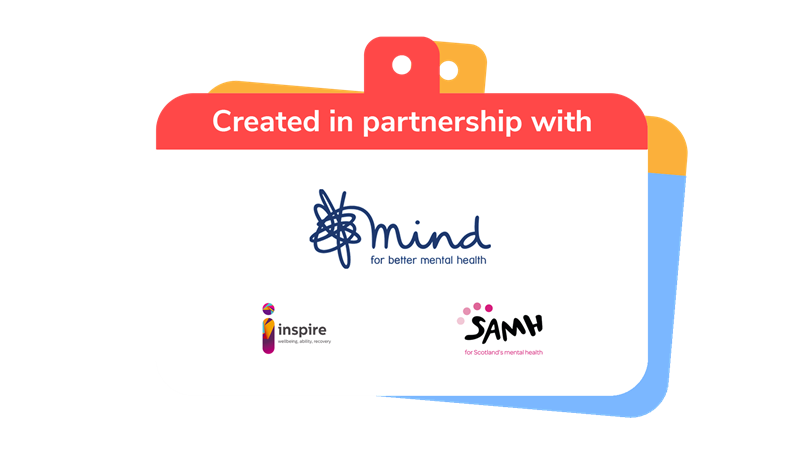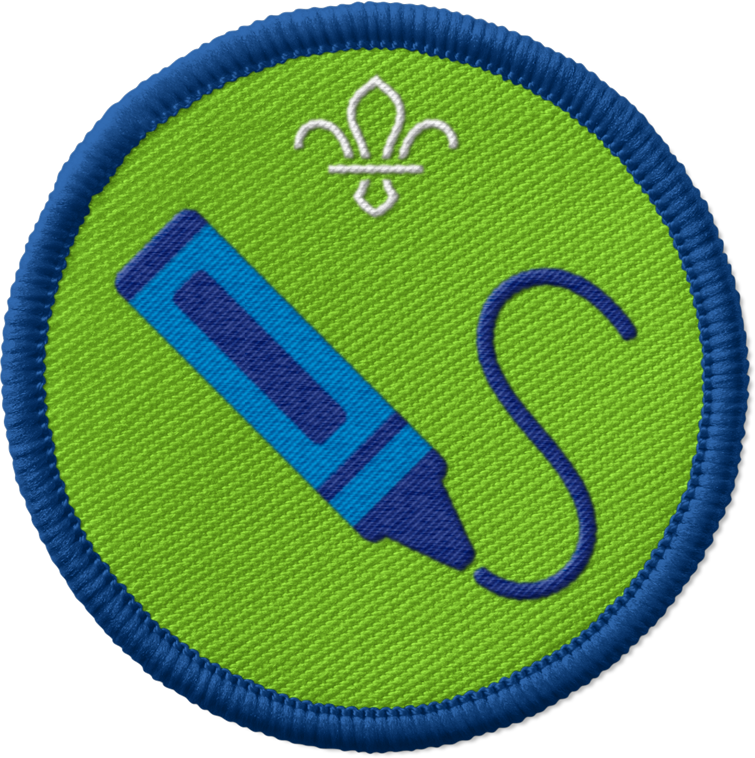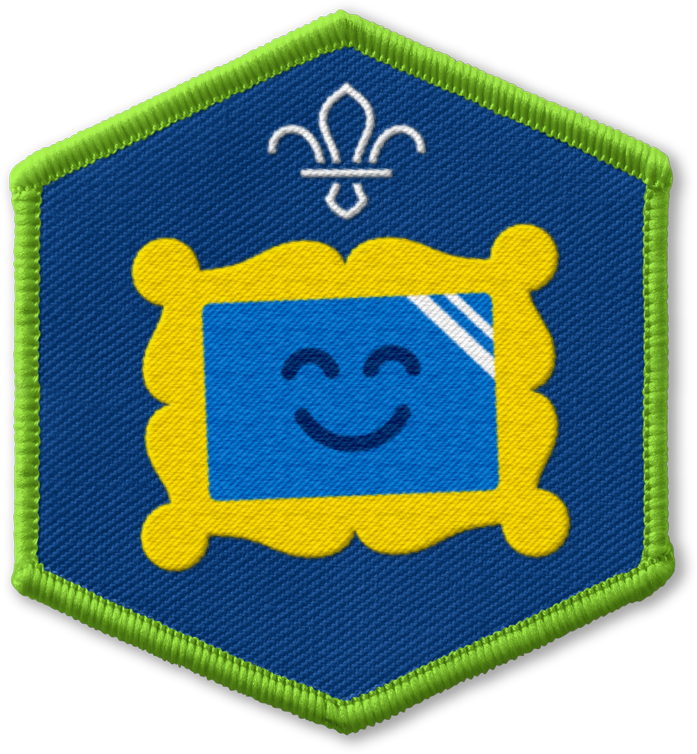
Five ways to wellbeing chatterbox
You’ll need
- Device with access to the internet
- Scissors
- A4 paper
- Pens or pencils
Before you begin
- This is a great activity to run during an online session. Check out the advice on using Zoom and other popular digital platforms and the guidance on being safe online.
- Decide how you’ll explain the ‘Five ways to wellbeing’. Depending on your audience, you may want to find some items to represent them, for example, a ball to represent ‘be active’ and a phone to represent ‘connect’.
- Send everyone a copy of the template to use. Any square of paper would work just as well – the lines on the template just make it a bit easier to follow.
Connect
Feeling close to and valued by other people is really important. It doesn’t matter how old you are – social relationships promote wellbeing and act like a buffer against mental health problems. Spend time with others you care about like family and friends. Talk to people (rather than just sending a message) – let them know what you’ve been up to and how you’re feeling, then ask them how they are too and really listen to their answer. Why not do an activity together?
Be active
Regular physical activity helps people of all ages. It doesn’t have to be an organised, fast-paced activity such as football or pilates. A walk in the park, an active game, dancing, or hoovering are all ways to get moving. Being active outdoors is great, if you can – sometimes it depends on the space and weather you have. Sometimes it’s nice to be alone, but you could also use being active to connect with other people.
Take notice
It can be easy to try to do lots of things at once, or to do an activity without really thinking about it. When you can, slow down and really focus on what you’re doing. Giving things like craft, games, or stories your full attention can help you feel calmer and enjoy the moment. Why not go for a walk and pay attention to the scenery, try a new food and see how it tastes, or really focus on the next thing you make?
Learn
Learning something new can make you feel proud of yourself, and it can be a great way to meet new people and get out and about. If books and puzzles are your thing, great – but if not, why not try to learn something a bit more practical? You could learn a new football trick, cook something new, or explore a new area.
Give
Sometimes other people are the best mood-booster. People who are more interested in helping others are more likely to rate themselves as happy. Research shows that doing just one act kindness a week for six weeks is associated with an increase in wellbeing! They don’t have to be huge gestures: a little note for a friend, or doing an extra chore at home, would be great places to start.
For more information, check out Mind’s website.
Talk about the five ways to wellbeing
- The person leading the activity should welcome everyone to the meeting and mute them.
- The person leading the activity should use the ‘Five ways to wellbeing’ above to help explain that research found five things that help to boost wellbeing. Everyone could guess what sorts of things might be on the list, before the person leading the activity tells them.
These aren’t the only ways to boost wellbeing, so welcome other sensible answers too. You might need to gently emphasise that while these things are all great, doing them doesn’t guarantee that someone won’t experience a mental health problem. These things on their own might not be enough for someone’s mental health problem to get better, too.
- For each way to wellbeing, everyone should work together to think of a few examples of things they do or would like to do.
- The person leading the activity should check that everyone has the equipment they need ready to go.
- The person leading the activity should show everyone how to complete each step of the instructions to make their chatterbox. Remind everyone that they can look at the instructions below to help them.
Try to do each step so it’s on camera. Give everyone time to copy and catch up before you move on to the next step.
How to make a chatterbox
- Take the template and cut out the square chatterbox.
- Put the template face down on the table, so you can’t see any of the writing. Fold it diagonally in half and unfold. Fold it diagonally in half the other way and then unfold.
Make sure you press your finger along the crease so it’s clear.
- You should now have a square with a diagonal cross folded across the middle.
- Fold each corner of the square into the middle of the diagonal cross. You should now have a smaller square – one side should be covered in numbers, and the other with the Scout logo.
- Turn the chatterbox over so the Scout logo is face up. It should have a cross folded across the middle.
- Fold each corner of the square into the middle of the cross. You should now have an even smaller square.
- Fold the chatterbox in half and then in half again, and then unfold.
- Gently push out a blank square, to make a pocket for a finger or thumb. Repeat with all of the other blank squares on the outside.
- Put your fingers inside these pockets, and pinch together. The top of your chatterbox should now come to a point – a bit like a pyramid.
Use the chatterboxes to talk about wellbeing
- Once everyone’s finished folding their chatterbox they should colour each of the outside blank squares (the sides of the pyramid) a different colour.
If you’re not using the template, people will need to label each of the inside triangles with a number from one to eight.
- Everyone should write (or draw) a message about the five ways of wellbeing under each number, for example, ‘how do you stay active?’ or ‘spend time with others you care about’.
- To finish, you could take it turns to use your new chatterboxes on your call, or challenge the group to use them to chat to some of the people they live with.
- Everyone should keep their chatterboxes safe – they may need them for another activity or to show someone else how to boost their mood.

This activity helps contribute towards some of the UN's Sustainable Development Goals. Find out more about the SDGs, and how Scouts across the world are getting involved.


Reflection
This activity helped everyone know how to live healthily. Everyone has mental health, so the five ways to wellbeing are for everyone (though everyone’s different, so some people might prefer some of them, and not everyone will get on with all of them). Does anyone have a favourite way to boost their wellbeing? Were any of the things surprising? Will anyone try to do some things to boost their wellbeing as a result of this activity?
This activity was also a chance to develop skills. Lots of the five ways to wellbeing need people to develop skills – connecting needs people to ask the big questions (and listen to the answers) and taking notice might need people to try, try again because lots of things in our world are very distracting! Lots of people don’t know about the five ways to wellbeing – does anyone have any ideas about how they could tell people?
Safety
All activities must be safely managed. You must complete a thorough risk assessment and take appropriate steps to reduce risk. Use the safety checklist to help you plan and risk assess your activity. Always get approval for the activity, and have suitable supervision and an InTouch process.
- Scissors
Supervise young people appropriately when they’re using scissors. Store all sharp objects securely, out of the reach of young people.
Get creative with your chatterboxes – make them as colourful as you like. Why not get the craft materials out too?
- Be sensitive if anyone has experience of mental health problems. Let them (and their parents or carers) know about the activity in advance and find out if there are any topics you should avoid.
- Everyone has different ways of boosting their wellbeing – different things work for different people and that’s OK. Remind everyone that the five ways to wellbeing aren’t the only ways and that not everyone has to enjoy every activity.
- Make sure people know that mental health problems are complicated, and can’t always be made better with the positive wellbeing activities and places. This isn’t the person’s fault, and it’s OK to need more support for mental health problems – speaking to a trusted adult, a GP, or Childline is a great place to start.
- Have some information on hand in case anyone wants to know more about how they can seek help, and always follow the Yellow Card.
All Scout activities should be inclusive and accessible.



